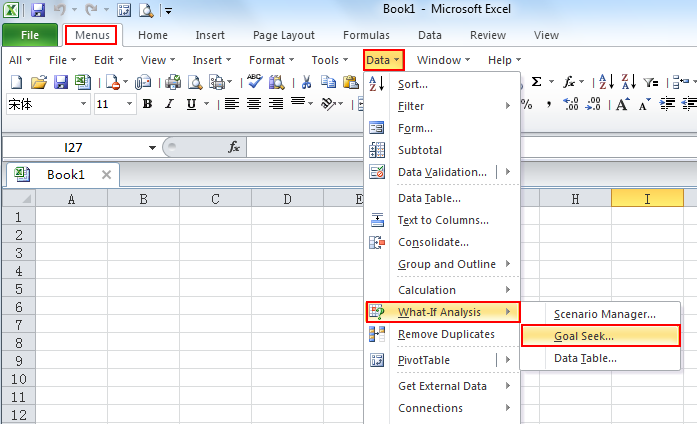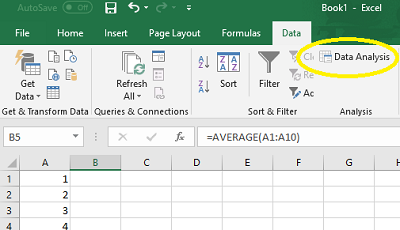

Statistical Analysis: Microsoft Excel 2010.Master business modeling and analysis techniques with Microsoft Excel 2013, and transform data into bottom-line results.Statistical Analysis: Microsoft Excel 2010 (repost).Statistical Analysis: Microsoft Excel 2010 (Repost).
 Statistical Analysis: Microsoft Excel 2010. To access these free files, please visit and click the Downloads Tab. You’ll also find additional material, such as a chart that demonstrates how statistical power shifts as you manipulate sample size, mean differences, alpha and directionality. There is an Excel workbook for each chapter, and each worksheet is keyed to one of the book’s figures. Explore statistical power by manipulating mean differences, standard errors, directionality, and alpha. Use ANOVA and ANCOVA to test differences between more than two means. Test differences between two means using z tests, t tests, and Excel’s Data Analysis Add-in.
Statistical Analysis: Microsoft Excel 2010. To access these free files, please visit and click the Downloads Tab. You’ll also find additional material, such as a chart that demonstrates how statistical power shifts as you manipulate sample size, mean differences, alpha and directionality. There is an Excel workbook for each chapter, and each worksheet is keyed to one of the book’s figures. Explore statistical power by manipulating mean differences, standard errors, directionality, and alpha. Use ANOVA and ANCOVA to test differences between more than two means. Test differences between two means using z tests, t tests, and Excel’s Data Analysis Add-in. .svg/1200px-Microsoft_Office_Excel_(2019–present).svg.png) Understand Excel’s new consistency functions. Explore correlation and regression to learn how variables move in tandem. Infer a population’s characteristics from a sample’s frequency distribution. Tell the truth with statistics, and recognize when others don’t. Master Excel’s most useful descriptive and inferential statistical tools. You see how to use Excel to test statistical hypotheses using the normal, binomial, t and F distributions.īecoming an expert with Excel statistics has never been easier! You’ll find crystal-clear instructions, insider insights, and complete step-by-step projects—all complemented by an extensive set of web-based resources. Along the way, you discover the most effective ways to use correlation and regression and analysis of variance and covariance. Using real-world examples, Carlberg helps you choose the right technique for each problem and get the most out of Excel’s statistical features, including its new consistency functions. Top Excel guru Conrad Carlberg shows how to use Excel 2010 to perform the core statistical tasks every business professional, student, and researcher should master. Use Excel 2010’s statistical tools to transform your data into knowledge Use Excel 2010’s powerful statistical tools to gain a deeper understanding of your data, make more accurate and reliable inferences, and solve problems in fields ranging from business to health sciences.
Understand Excel’s new consistency functions. Explore correlation and regression to learn how variables move in tandem. Infer a population’s characteristics from a sample’s frequency distribution. Tell the truth with statistics, and recognize when others don’t. Master Excel’s most useful descriptive and inferential statistical tools. You see how to use Excel to test statistical hypotheses using the normal, binomial, t and F distributions.īecoming an expert with Excel statistics has never been easier! You’ll find crystal-clear instructions, insider insights, and complete step-by-step projects—all complemented by an extensive set of web-based resources. Along the way, you discover the most effective ways to use correlation and regression and analysis of variance and covariance. Using real-world examples, Carlberg helps you choose the right technique for each problem and get the most out of Excel’s statistical features, including its new consistency functions. Top Excel guru Conrad Carlberg shows how to use Excel 2010 to perform the core statistical tasks every business professional, student, and researcher should master. Use Excel 2010’s statistical tools to transform your data into knowledge Use Excel 2010’s powerful statistical tools to gain a deeper understanding of your data, make more accurate and reliable inferences, and solve problems in fields ranging from business to health sciences. 
Statistical Analysis: Microsoft Excel 2010




.svg/1200px-Microsoft_Office_Excel_(2019–present).svg.png)



 0 kommentar(er)
0 kommentar(er)
